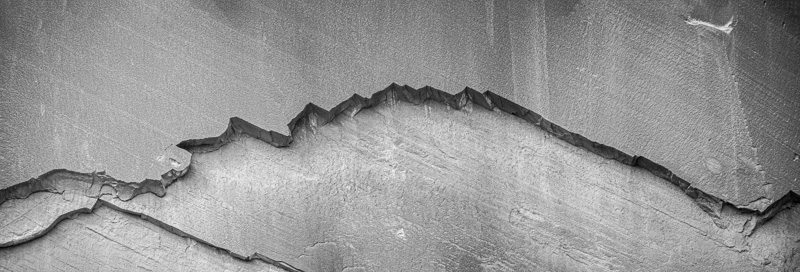Every Picture Is a Compromise
Lessons from the Also-rans
Most photography websites show the photographer's very best work. Wonderful. But that's not the full story of a creative life. If we want to learn, we'd better pay attention to the images that aren't "greatest hits" and see what lessons they have to offer. Every picture is a compromise — the sum of its parts, optical, technical, visual, emotional, and even cosmic – well, maybe not cosmic, but sometimes spiritual. Success on all fronts is rare. It's ok to learn from those that are not our best.
This is a series about my also-rans, some of which I've been able to improve at bit (i.e., "best effort"), none of which I would consider my best. With each there are lessons worth sharing, so I will.
Original digital captureWhat I saw that I liked:This is a very curious crack in the rock walls of Capitol Reef. What I don't like in the picture:One of the reasons I am shooting Micro 4/3 is the aspect ratio, 4:3. I've never been a fan of the 3:2 aspect ratio of today's full frame cameras. In fact, I've never used a camera with a 3:2 aspect ratio, so my eye just doesn't see that way. All my photographic heroes shot 4x5, so my compositional vision has been nudged into that aspect ratio, I guess. In all those years I shot 2 1/4 x3 1/4, I most frequently cropped the edges a bit to push an image slight squarer. What I learned:But truth be told, the aspect ratio of the camera is always trumped by the needs of the subject. In this case, that long crack in the wall just had be the dominant factor in how I shot it. A three-image stitched pano was the answer. 2nd Chances: What I might try nextNow that I have it stitched, I can go to work on any post-processing enhancements I need to do — including decisions about color, b/w, or some sort of warm sepia tone. |


